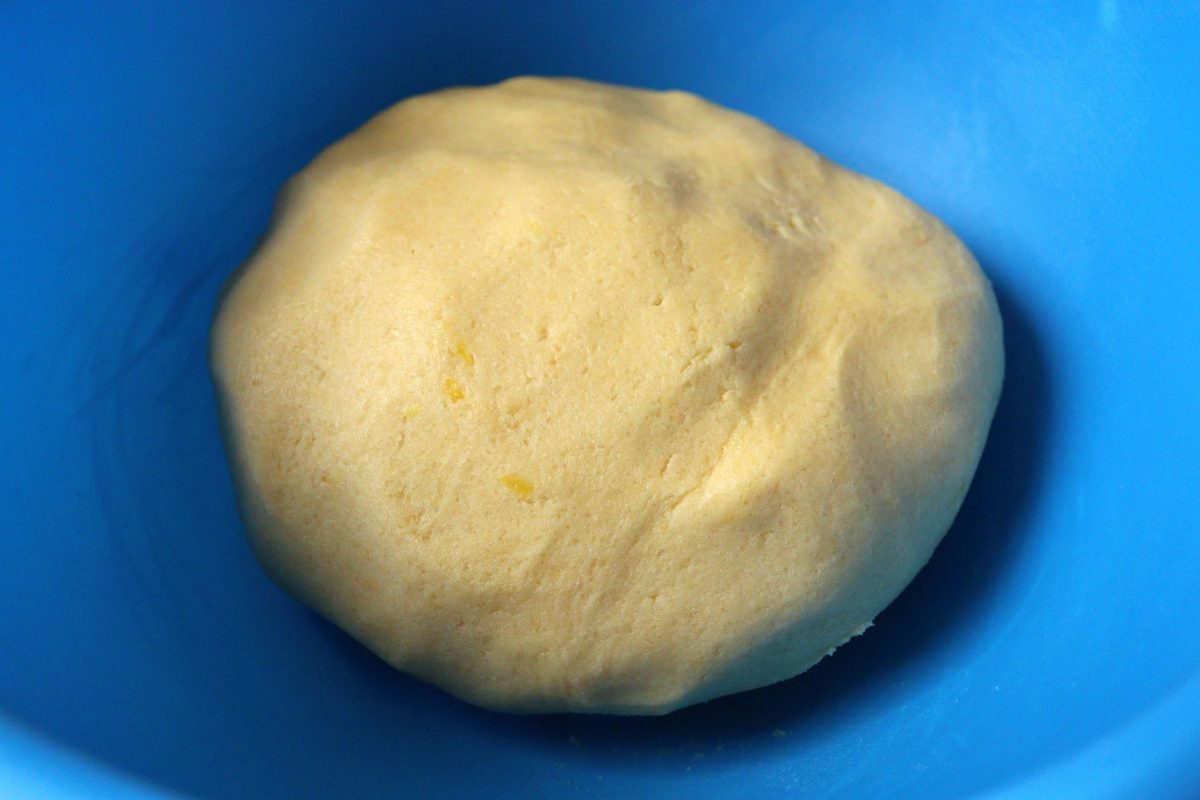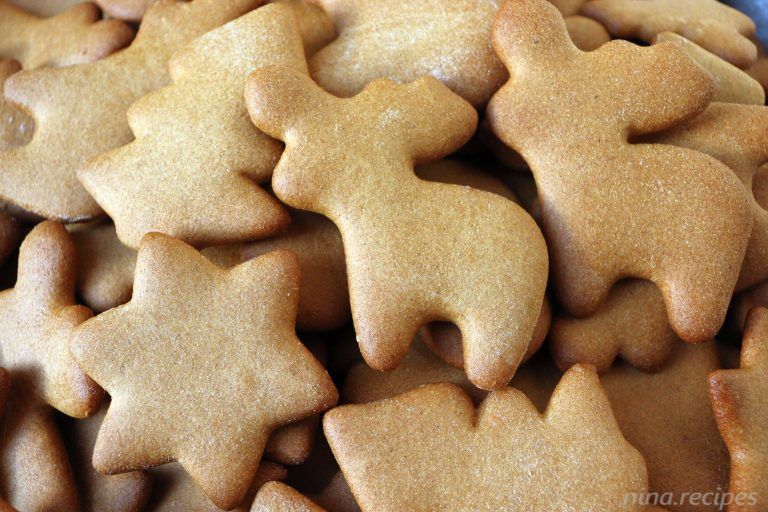Linzeraugen – German Linzer Cookies
Linzer Cookies are known by many names: Linzer Augen, Ochsenauge, Pfauenaugen, Spitzbuben, Hildabrötchen, and the list can go on with other local names. Nonetheless, they are delicious and don’t require special ingredients or even a special cookie cutter. Even though in Germany you can easily buy a special Linzer Cookie Cutter, you can use pretty much any cookie cutter you have at home, or even a glass and whatever you have smaller, to make a hole in the middle (ex., a piping nozzle or even a small bottle cap).
What are Linzer Cookies? They are pretty much cookies made of Mürbeteig – German Shortcrust Pastry or Cookie Dough Recipe, and filled with jam/jelly (Gelee), usually made of red currants. Other popular options are raspberry, strawberry, and cherry. Since Linzer cookies derive from Linzer Torte, Nussmürbeteig – Nut Shortcrust Pastry was originally used, but nowadays you can find both options: with and without nuts. One side of the cookie will have some kind of opening in the middle: either a hole, 3 holes, or any other motif like a star, heart, lamb/duck (for Easter), reindeer/moose, and so on. The traditional ones were previously made with holes in the middle, but nowadays you can find more and more motifs on the market. They can be made weeks before and kept in a biscuit tin or cookie jar.
Ingredients for ~ 30 cookies (Ø 5cm):
- 100g caster sugar
- 200g butter
- 300g flour
- 1/4 tsp salt
- 1 sachet vanilla sugar (8g ~ 2tsp) or 1/2 vanilla pod
- 1-2 egg yolks or one whole egg (optional)
- peel of half a lemon (optional)
- jam/jelly for filling (I usually use red currant jelly but any will do; it also goes well with apricots or cherry jam)
- powdered sugar for dusting
- All ingredients should be cold, especially the butter.
- Mix the dry ingredients: flour, sugar, vanilla sugar, and salt. You can use vanilla bean or vanilla extract if vanilla sugar is not available.
- Add the cold butter cut into cubes, lemon peel, and the egg/egg yolks.

- Mix everything until the ingredients are combined. Do not overmix because the butter will start melting.

- Split the dough in half (it will be easier to work with), wrap it in foil, and keep it in the fridge overnight or for a minimum of 1 hour. Try to make it flat, so you can roll it more easily.
- If you want to use the dough right away, you can use powdered sugar instead of caster sugar. It is, however, recommended to keep the dough minimum of half an hour in the fridge so that the ingredients properly combine and it’s easier to roll.
- Preheat the oven to 190°C/374°F (no ventilation).
- Use a little flour to roll the dough (about 3 – 3,5mm thick). If the dough is too soft, pop it back in the fridge to cool down. The dough should be rather cold and keep its shape.
- Cut the dough with a cookie cutter and put them on a tray, lined with parchment paper.
- Tipp: bake the sides of the cookies with holes separately from the full sides, instead of in pairs, since they tend to brown faster.
- Bake the cookies for about 10-12 minutes: the sides with the holes will need a minute less so they don’t get too brown.
- The cookies are baked when the margins are a little brown and the middle is still yellow. You don’t want to brown them.
- Let them cool down completely before filling them.
- Warm up the jam/jelly a little to spread more easily.
- Line a tray with pairs of cookies (one side with holes, and another without) and dust them with powdered sugar.
- With a teaspoon, add a small amount of jelly in the middle of the cookie side without holes, and gently press the other half with holes on top. Heat up the jelly beforehand so it’s easier to fill the cookies and they will also look better.
- If you feel like there isn’t enough jelly in the middle, you can add a little more. If the jelly is warm, it distributes evenly and looks nicer.


- Let the cookies dry for 1-2 days on a tray before packing them, so the jelly doesn’t leak. The cookies will be very soft and melt in your mouth.

- You can also make these Linzer cookies with a nut shortcrust pastry – Nussmürbeteig, and any other Mürbeteig – Shortcrust Pastry. I prefer to call them Spitzbuben when I’m using nuts (almonds).
- In the region where I live, the Palatinate region, they are also known as Pfauenaugen – Peacock Eyes Cookies. You can use any jam to fill them, but the jelly works better because it spreads nicely.













